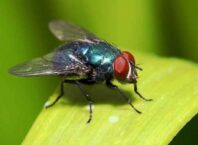When it comes to lawn care in Nixa, Missouri, there really is no such thing as shade-loving grass.
Anyone who has decided to keep the grass under shady areas healthy is truly fighting an uphill battle.
However, it is also wrong to assume that all types of grasses love to be exposed to the sun’s heat for extended hours of the day, especially during summer. There’s a reason why some grass varieties are called cool-season grasses, after all.
But even with these challenges, you shouldn’t give up hope in taking care of the grass you chose for your lawn.
Most grasses can be improved under the shade, the full heat of the sun, and other adverse conditions. The key is to understand the problems each grass variety faces in every situation.
Here, you’ll learn about the top five care tips for every type of grass and how to overcome them under different conditions.
Growing Grass in Sunny and Shady Areas
In a perfect world, you get to choose precisely the right spot to grow your lawn. Somewhere with just the right amount of sun and shade sounds just about right.
But sunny or shady, you can grow grass in your property regardless of the length of time it gets exposed to the sun. Here are some ways for you to achieve this:
1. Learn about the challenges of growing under sun and shade
When it comes to environmental challenges, grasses growing in either shady or sunny places are fighting their own battles.
In sunny areas, the primary challenge is preventing the grass from dying of thirst and sunburn.
Meanwhile, those in shady spots are faced with two main problems: low sunlight (both quality and quantity) and lack of air circulation.
Grass living under an overhang or large trees get less quantity of sunlight, while those that only get exposed to filtered or reflected rays get lower quality of sunlight.
In both cases, the grass gets long spindly leaves, which are not as hardy as those grown under direct sunlight. They also have weaker root systems, making them unable to recuperate if damaged due to foot traffic or pets.
Besides sunlight, grass under shady areas also gets less air movement. The dew that settles on the leaf blades at night stays there until mid-day, leaving it susceptible to foliar disease.
2. Adjust according to grass needs
Once you know the issue, you can already make adjustments to accommodate grass needs.
For instance, if your lawn is in a shady spot with less air movement, you should do what you can to improve the airflow. Since dew often accumulates under this condition, make sure that you do something to allow it to dry more quickly by trimming lower branches or reducing the size of surrounding shrubs and trees.
The key is to observe your landscape with a critical eye. If there are any damaged, old, or overgrown trees, consider replacing them with new ones – preferably smaller types to allow air to flow more freely.
If the issue is a lack of sunlight, you can adjust the mowing height. This will allow the grass to have more blade surface that can capture and photosynthesize the available sunlight.
Taller blades of grass also encourage deeper roots, which, as explained earlier, is critical to grass health and resilience. Also, remember to heed mowing best practices and avoid cutting more than one-third of grass blades.
3. Create an appropriate irrigation and fertilization schedule for the situation
Another matter that affects grasses growing in both sunny and shaded areas is moisture and nourishment.
With lawns under the full power of the sun, water evaporates more quickly. The situation is reversed with those in shady areas.
With that in mind, study how much sunlight your lawn gets throughout the day. Then adjust the frequency and amount of watering, depending on what you’ve observed in your lawn.
Whether grown under the sun or shade, lawn grasses benefit most from morning irrigation.
When you water them midday while the sun is shining quite brightly, the water might evaporate before it even reaches the grass roots. When done in the evening or late afternoon, it might leave the grass vulnerable to disease since the leaves don’t have enough time to dry.
The same goes for fertilization.
Under the shade, grass tends to grow slower. While fertilizers spur growth, stress can leave grasses unable to handle the same amount of fertilizer as those growing directly under the sun.
If you’re not confident about fertilization and irrigation schedules, it is best to seek expert help from lawn care and landscaping professionals in Springfield, Missouri.
General Care Tips for Warm- and Cool-Season Grasses
Depending on the location of your property, your lawn contains either warm-season or cool-season grasses.
These turfgrass types require almost the same treatments, such as aerating, mowing, fertilizing, and watering. What differs is how and when you tackle such tasks.
Below are some general guidelines you can use when maintaining both warm- and cool-season grasses:
4. Know your grass requirements
Like other plants, the only way to successfully grow and maintain different grass varieties is by knowing their specific needs.
As you already know, warm-season and cool-season grasses not only thrive in specific places but also have different needs.
Besides this broad categorization, various grass species are unique, and thus, require a special combination of care and maintenance.
For example, Saint Augustine grass is a well-known warm-season grass that thrives in shady spots. It even benefits from getting planted in dappled shade areas.
Also, it doesn’t need to be mowed much and won’t need much help with pests. However, it cannot tolerate drought as well as zoysia grass, which is another warm-season grass.
5. Keep your mower sharp
Mowing is one of the most time-consuming tasks in lawn maintenance, but it is also considered crucial in keeping the grass on your turf in check.
Regardless of the type of grass you have, keeping your mower blades sharp will ensure that you cut them cleanly rather than tearing them apart, which leaves them more susceptible to pests and diseases.
Care for Every Type of Lawn
Lawn care may entail the same things regardless of the type of grass you’re growing. However, there remain certain details – like the information shared in this article – that you need to understand to help the type of lawn you have to reach its full potential.

















































































